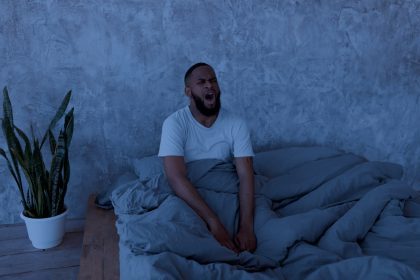You probably think balance comes from your legs, core, or inner ear, but your eyes might be the most important factor in staying upright and stable. Vision provides up to 80% of the sensory information your brain uses to maintain balance, which means training your eyes could be more effective for improving stability than traditional balance exercises.
Most balance problems aren’t actually balance problems – they’re vision problems disguised as coordination issues. When your visual system can’t track movement, focus properly, or coordinate between both eyes, your entire balance system becomes compromised in ways that affect everything from walking to athletic performance.
Your visual system processes balance information constantly
Your eyes don’t just see – they continuously gather spatial information that your brain uses to orient your body in space and predict movement requirements. This visual processing happens so quickly and automatically that you’re completely unaware of how much your balance depends on what and how you see.
When you walk, your eyes are constantly scanning ahead to identify obstacles, changes in terrain, and movement requirements. This visual preview allows your brain to prepare your muscles and joints for upcoming balance challenges before they occur, preventing trips and falls.
Poor visual processing skills can create balance problems even when your inner ear, muscles, and joints are functioning perfectly. If your eyes can’t track smoothly, focus accurately, or work together efficiently, your brain receives conflicting or inadequate information about your position and movement in space.
Eye tracking problems create instability
Smooth pursuit eye movements – your ability to track moving objects with your eyes – directly correlates with balance performance. People with poor tracking skills show more postural sway and are more likely to lose balance during dynamic activities like walking on uneven surfaces or changing direction quickly.
Saccadic eye movements, the quick jumps your eyes make when shifting focus between objects, also influence balance stability. When these movements are inaccurate or slow, your brain struggles to build an accurate picture of your surroundings, leading to hesitation and instability during movement.
Vergence problems, where your eyes don’t work together properly to focus on objects at different distances, can cause double vision or visual confusion that directly impacts balance. Many people with unexplained dizziness or balance issues actually have subtle binocular vision problems that create spatial disorientation.
Peripheral vision provides crucial stability cues
Your peripheral vision detects motion and spatial relationships that are essential for maintaining balance, even though you’re not consciously aware of this information. Training your peripheral awareness can dramatically improve balance and reduce fall risk, especially in older adults.
Many balance problems stem from tunnel vision habits developed through excessive screen time and indoor living. When you spend most of your time focusing on close objects like phones and computers, your peripheral vision becomes less active and less effective at detecting balance-threatening situations.
Expanding peripheral awareness through vision training can improve reaction time to balance challenges and reduce the over-reliance on central vision that characterizes many balance disorders. This broader visual awareness helps your brain integrate information from multiple sources for better stability.
Depth perception affects movement confidence
Poor depth perception makes it difficult to judge distances, step heights, and spatial relationships accurately, leading to cautious, unstable movement patterns. Many people who appear to have balance problems actually have depth perception issues that make them afraid to move confidently.
Binocular vision problems can reduce depth perception and create visual-spatial confusion that affects balance even during simple activities like walking down stairs or stepping off curbs. Training both eyes to work together more effectively can restore normal depth perception and movement confidence.
Age-related changes in vision, including reduced contrast sensitivity and slower focus adjustment, can significantly impact balance and increase fall risk. Vision training can help compensate for these changes and maintain balance function despite declining visual acuity.
Specific eye exercises improve balance performance
Practice smooth pursuit exercises by slowly tracking objects with your eyes while keeping your head still. Use your finger, a pen, or moving objects to train your eyes to follow smooth, continuous motion in different directions and speeds.
Saccadic training involves quickly shifting your focus between distant targets while maintaining accuracy and speed. Set up targets at different distances and practice jumping your focus between them as quickly and accurately as possible.
Peripheral awareness exercises include activities like maintaining focus on a central target while identifying objects or movements in your peripheral vision. This dual-task training improves your ability to process multiple visual inputs simultaneously.
Consider working with a vision therapist or sports vision specialist if you have persistent balance issues that don’t respond to traditional balance training. Many balance disorders have visual components that require specialized assessment and treatment.
Practice vision exercises in different lighting conditions and environments to improve visual adaptability. Your balance system needs to work effectively in various visual conditions, from bright sunlight to dim indoor lighting.















